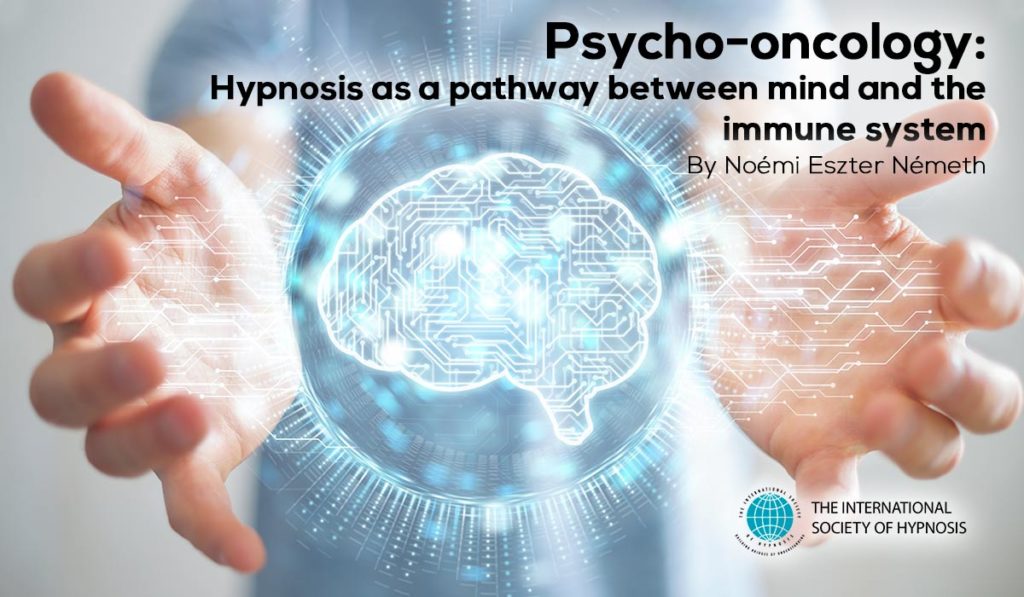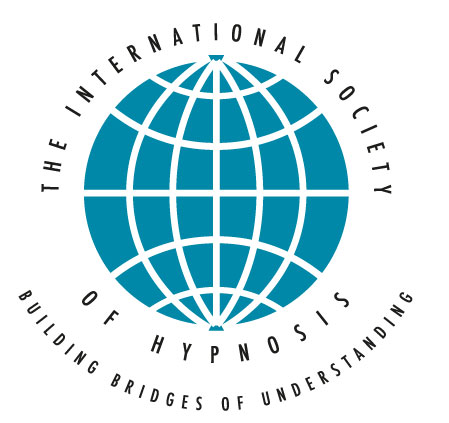

By Noémi Eszter Németh
The connection between mind and body has always been popular in history, and still, is an emerging topic in applied sciences. Despite this, in practice, cognitive and emotional factors are rarely considered in the recovery from diseases (Hall, 1982). In fact, medicine and psychology may be two sides of the same coin and being so should be simultaneously examined in order to give effective and holistic manner of help for patients dealing with not only immune malfunctions but various health problems.
The relatively young umbrella term psychoneuroimmunology made by Ader in 1981 refers to the study of interactions among the central nervous system and immunity functions. In other words, it aims to meet the field of psychology, neurology and immunology as these are connected together in many ways (Ader, 1981, cited by Hall, 1982). Thus, psychoneuroimmunology contests all the challenges of its three components. However, scientifically appropriate evidence has been accumulated since Ader first used the word.
The purpose of this essay is to give insight about hypnosis applied in therapy of immunological downregulations by introducing the underlying mechanisms, presenting techniques that are currently thought to be effective and also summarizing the methodological difficulties they are dealing with at the same time. Being a life-threatening, yet unfortunately, frequent diagnosis, cancer earned a prominent place in the studies, which motivated me to choose psycho-oncological results as a topic of my review.
Furthermore, cancer as a diagnosis fulfils the criteria of Millen and Cohen (2001) who assume that in order to really get to know the effect of hypnosis on the immune system,
the research process should involve patients who are exposed to both psychological and biological stress.
The main challenge of bringing together psychology and biology clearly stems from the elusiveness of the mind, as stress reactions and the immune system are similar in terms of complexity (Gruzelier, 2002). Assuming that assessing all aspects of immune reactions in one research study is not plausible, most researchers attempt to measure relevant immune outcomes. One of these is related to the direct number of immune markers, called enumerative, measures white blood cells (involving granulocytes, monocytes, lymphocytes, natural killer cells, B-lymphocytes, and Tlymphocytes) and antibody populations (for instance immunoglobulins A, G and M in the blood serum and secretory immunoglobulin A in saliva.)
Another measurement type is functional. It assays how effectively the enumerative factors work including how many lymphocytes divide or how effective neutrophils adhere (Miller & Cohen, 2001). I would like to note that according to the systematic review of mind-body medicine (that mentions various types of relaxations and also hypnosis) by Wahbeh and colleagues (2012), only IgA showed strong evidence for being affected by mind-body medicine which may not be ideal for every patient group (Wahbeh, Haywood, Kaufman, Harling, & Zwickey, 2009). However, it is hard to decide which type of marker is unequivocally exposed to mental factors and it may depend on the characteristics of the disease itself. Nonetheless, using mind and body connection for immune boosting would be beneficial for prevention in healthy people, especially if they prove to be sensitive based on their medical history. What makes it more difficult to find immune enhancement is that the body is homeostatic (Kiecolt-Glaser & Glaser, 1992).
Thus, it would prevent any over-activation. Miller and Cohen (2001) also submit that a patient must be exposed to an immune-dysregulating stressor to have immune impairment.
I would like to list immunological diseases that have been researched in connection with hypnosis as an illustration of how many human conditions are thought to be affected by emotional factors. Hall refers to the topic as “the psychology of healing” (Hall, 1982 p.101) in which he collected many results attempting to use hypnotic treatment in allergy symptoms associated with asthma and hay fever (Mason & Black, 1958, cited by Hall, 1982), allergy to cats, weeds and candy (Kroger, 1964, cited by Hall, 1982) and dog dander (Perloff & Spiegelman, 1973, cited by Hall, 1982). The skin is also affected in immunological processes. In addition to being the first barrier against external insults, it is strongly exposed to internal mechanisms like tumor formation, inflammation, autoimmunity and allergy (Richmond & Harris, 2014). In terms of immune mediated dermatological conditions, Hall mentions the clinical studies of chronic urticaria conducted by Kaneko and Takaishi (1963, cited by Hall, 1982) and the research of Sinclair-Gieben and Chalmers (1959, cited by Hall, 1982) who tested hypnosis as a treatment of bilateral warts. According to Hall, the results of the above-mentioned research are questionable because they do not meet the criteria of proper research methodology. However, I assume that these early studies incited the formation of a scientific paradigm shift towards considering psychology in immunology of more severe conditions.
In terms of subsequent studies, Gruzelier and colleagues (2002) found that a six-week long self-hypnosis training reduced the recurrence of genital herpes by 40% in HSV-2 patients. Additionally, the beneficial effect on the immune functions coincided with alleviation of depression which can be attributed to the liberation of the unpleasant symptoms. Another important result of this research is that the hypnotizability of the patients was accompanied by functional enhancement in natural killer cell activity and other up-regulation of immune functions. According to Gruzelier, improvements in health and well-being were not restricted to high hypnotizables and the impact of personality differences was also significant (Gruzelier et al., 2001). Moreover, Gruzelier and colleagues noted another study in which they found that fewer medical students reported illnesses during exam period in the group receiving targeted immune imagery hypnosis, than in the relaxation and non-intervention control groups. Further investigations (Wood et al., 2011, Naito et al., 2003, Whitehouse et al., 1996) also found hypnosis to be effective in enhancing immune functions.
The general principles of the mind-body connection is based on stress mechanisms. Sympathetic fibres are directly connected to the brain and the primary and secondary lymphoid tissues, (Hudacek, 2007) and so their neurotransmitters serve as a mediator that can translate subjective stress perception into biological reactions. There also exist neuropeptides that bond to receptors of cells in the central nervous system and immune cell receptors as well (Bakke, Purtzer, & Newton, 2002, cited by Hudacek, 2007). In addition, hormones are also affected in stress mechanisms as stress activates the hypothalamic-pituitary-adrenal-axis, sympatheticadrenal-medullary axis, and hypothalamic-pituitary-gonadal axis. These pathways induce hormone releasing (in particularly adrenocorticotropic hormone and cortisol) if the body is exposed to stress and eventually these hormones can influence leukocytes (Miller & Cohen, 2001). Knowing that the nature of stress is contingent and somehow idiosyncratic, I assume that if the person frames the situation as stressful, it is enough for the body to initiate stress reaction. Thus, our perceptions, (either conscious or unconscious) themselves can serve as a pathway between mind and the immune system.
As the well-functioning immune surveillance is constantly monitoring neoplasm, it is capable of destroying the cancer producing cell before it becomes a tumor. Thus, wholesome operation of the immune system is necessary in cancer prevention. (Hall, 1982) As stress affects the immune system in the above mentioned pathways, it can also be related to cancer formation. Given this relationship, research on the connection between hypnosis and cancer has been ongoing since 1958 (Hudacek, 2003). One of the earliest yet controversial attempts to clinically test hypnosis-based immune suggestions on cancer patients (along with traditional medication) was the research of Carl Simonton and Stephanie MatthewsSimonton (Simonton, Matthews-Simonton et al., 1978). Although their successful results were debated because of many methodological flaws (Hall, 1982), their approach inspired many further therapies. The method is based on intense visualization of the microbiological fight, for instance patients are encouraged to imagine their powerful cells overcoming the weak cancer cells (Hall, 1982). Since that, the application of guided imagery therapy became a field of study as a subdivision of hypnosis, which take advantage of human imagination and aspired to use mind and body connection. Rider and Achterberg described guided imagery “as the internal experience of a perceptual event in the absence of the actual external stimuli” (Rider & Achterberg, 1989, p. 248, cited by Trakhtenberg, 2008). This definition is suitable for patients knowing that they lack well-being in some way. Moreover, health is abstract and intangible either for healthy or ill people. Thus, health can only be experienced as an attitude towards healing placed somewhere in the middle of the mind, which also promotes the idea of using our psyche as a tool.
Many years later, Walker and colleagues (1997) reported a controlled and prospective study of breast cancer patients. They found that guided imagery and relaxation training resulted in increasing of the T-cell activation percentage and higher lymphokine killer cell efficiency (Walker, Walker, Heys et al., 1997). A subsequent study of Fawzy and colleagues found that hypnosis enhanced immune function for instance natural killer cell activity in Stages I and II malignant melanoma patients 6 months after the treatment (Fawzy, Cousins, Fawzy et al., 1993). Moreover, the 10-years follow-up showed an improved survival rate (Fawzy, Canada, & Fawzy, 2003). However, according to the overview of Kristin Hudacek (2007), further research is necessary in order to determine the role of hypnosis as a clinical medicine.
Although the exact mechanisms of mind-body medicine are yet to be investigated or would never be completely unfolded, hypnosis could be a potentially effective adjuvant therapy that supplements the traditional medical therapy of carcinoma and other immune-related diseases. In this essay I emphasized results that measured the effect of hypnosis directly on immune functions. Nevertheless, there is a growing body of evidence showing that hypnosis can alleviate the pain accompanying various illnesses, including AIDS (Langenfeld, Cipani & Borckardt, 2002). Other ways hypnosis in cancer treatment is used also should be noted. For instance, it can soothe the side-effects of the radiotherapy and chemotherapy or, especially in crisis situations such as prior to surgery, it can help reframe the situation in a more positive manner (Montgomery, Schnur, & Kravits, 2013). Moreover, it is an inexpensive and easy-to-learn technique, thus it
can be widely used.
In this essay I provided an overview of various results in the field of psychoneuroimmunology including scientifically appropriate research that happens to spot the effect of mind on the body with the technique of hypnosis. In addition, I also referred to methodological difficulties of the topic. In conclusion, personality and attitude towards the disease have significant effect in the course of healing, (Gruzelier, 2002) which challenges the study of psychoneuroimmunology in a way it may never be able to overcome. In spite of that, the elusive nature of the mind also gives space for further studies and top-down healing of the body.
REFERENCES
- Ader, R. (1981). Psychoneuroimmunology. New York. Academic Press. Bakke, A. C., Purtzer, M. ., & Newton, P. (2002). The effect of hypnoticguided imagery on psychological well-being and immune function in patients with prior breast cancer. Journal of Psychosomatic Research, 53(6), 1131–1137. https://doi.org/10.1016/S0022-3999(02)00409-9
- Fawzy, F. I., Canada, A. L., & Fawzy, N. W. (2003). Malignant Melanoma: Effects of a Brief, Structured Psychiatric Intervention on Survival and Recurrence at 10-Year Follow-up. Archives of General Psychiatry, 60 (1), 100–103. https://doi.org/10.1001/archpsyc.60.1.100
- Fawzy, F. I., Cousins, N., Fawzy, N. W., Kemeny, M. E., Elashoff, R., & Morton, D. (1990). A Structured Psychiatric Intervention for Cancer Patients: I. Changes Over Time in Methods of Coping and Affective Disturbance. Archives of General Psychiatry, 47(8), 720–725. https://doi.org/10.1001/archpsyc.1990.01810200028004
- Gruzelier, J. H. (2002). A Review of the Impact of Hypnosis, Relaxation, Guided Imagery and Individual Differences on Aspects of Immunity and Health. Stress, 5(2), 147–163.
https://doi.org/10.1080/10253890290027877 - Hall, H. R. (1982). Hypnosis and the Immune System: A Review with Implications for Cancer and the Psychology of Healing. American Journal of Clinical Hypnosis, 25(2–3), 92–103.
https://doi.org/10.1080/00029157.1982.10404080 - Hudacek, K. D. (2007). A Review of the Effects of Hypnosis on the Immune System in Breast Cancer Patients: A Brief Communication. International Journal of Clinical and Experimental Hypnosis, 55(4), 411–425. https://doi.org/10.1080/00207140701506706
- Kaneko, Z., & Takaishi, N. (1963). Psychosomatic Studies on Chronic Urticaria. Psychiatry and Clinical Neurosciences, 17(1), 16–24. https://doi.org/10.1111/j.1440-1819.1963.tb00679.x
- Kiecolt-Glaser, J. K., & Glaser, R. (1992). Psychoneuroimmunology: Can Psychological Interventions Modulate Immunity? Journal of Consulting and Clinical Psychology, 60(4), 569–575.
https://doi.org/10.1037/0022-006X.60.4.569 - Kroger, W. S. (1964). Current status of hypnosis in allergy. Annals of Allergy, 22, 123-129.
- Langenfeld, M. C., Cipani, E., & Borckardt, J. J. (2002). Hypnosis for the control of hiv/aids-related pain. International Journal of Clinical and Experimental Hypnosis, 50(2), 170–188.
https://doi.org/10.1080/00207140208410097 - Masona, A. & Blacks, S. (1958). Allergic skin responses abolished under treatment of asthma and hayfever by hypnosis. Lancet, 1, 877-880.
- Miller, G. E., & Cohen, S. (2001). Psychological interventions and the immune system: A meta-analytic review and critique. Health Psychology, 20(1), 47–63. https://doi.org/10.1037/0278-6133.20.1.47
- Montgomery, G. H., Schnur, J. B., & Kravits, K. (2013). Hypnosis for cancer care: Over 200 years young. CA: A Cancer Journal for Clinicians, 63(1), 31–44. https://doi.org/10.3322/caac.21165
- Naito, A., Laidlaw, T. M., Henderson, D. C., Farahani, L., Dwivedi, P., & Gruzelier, J. H. (2003). The impact of self-hypnosis and Johrei on lymphocyte subpopulations at exam time: A controlled study. Brain Research Bulletin, 62(3), 241–253. https://doi.org/10.1016/j.brainresbull.2003.09.014
- Perloff, M. M., & Spiegelman, J. (1973). Hypnosis in the Treatment of a Child’s Allergy to Dogs. American Journal of Clinical Hypnosis, 15(4), 269–272. https://doi.org/10.1080/00029157.1973.10402261
- Richmond, J. M., & Harris, J. E. (2014). Immunology and skin in health and disease. Cold Spring Harbor Perspectives in Medicine, 4(12). https://doi.org/10.1101/cshperspect.a015339
- Rider, M. S., Achterberg, J., Lawlis, G. F., Goven, A., Toledo, R., & Butler, J. R. (1990). Effect of immune system imagery on secretory IgA. Biofeedback and Self-regulation, 15(4), 317–333.
- Simonton, D. C., Matthews-Simonton, O. N. & Creighton, J. L. (1978). Getting well again. Los Angeles, Tarcher-St. Martins.
- Sinclair-Giebae, A. H, . & Chalmers, D.(1959). Evaluation of treatment of warts by hypnosis. Lancet, 2, 480-482.
- Trakhtenberg, E. C. (2008). The Effects of Guided Imagery on the Immune System: A Critical Review. International Journal of Neuroscience, 118(6), 839–855. https://doi.org/10.1080/00207450701792705
- Wahbeh, H., Haywood, A., Kaufman, K., Harling, N., & Zwickey, H. (2009). Mind-Body Medicine and Immune System Outcomes: A Systematic Review. The Open Complementary Medicine Journal, 1(1), 25–34. https://doi.org/10.2174/1876391×00901010025
- Walker, L. G., Walker, M. B., Heys, S. D., Lolley, J., Wesness, K., & Eremin, O. (1997). The psychological and psychiatric effects of rIL-2 therapy: a controlled clinical trial. Psycho-Oncology, 6(4), 290–301. https://doi.org/10.1002/(SICI)1099-1611(199712)6:4<290::AIDPON283>3.0.CO;2-G
- Whitehouse, W. G., Dinges, D. F., Orne, E. C., Keller, S. E., Bates, B. L., Bauer, N. K., … Orne, M. T. (1996). Psychosocial and immune effects of self-hypnosis training for stress management throughout the first semester of medical school. Psychosomatic Medicine, 58(3), 249–263. https://doi.org/10.1097/00006842-199605000-00009
- Gruzelier, J. H. (2002). A Review of the Impact of Hypnosis, Relaxation, Guided Imagery and Individual Differences on Aspects of Immunity and Health. Stress, 5(2), 147–163.
https://doi.org/10.1080/10253890290027877 - Hall, H. R. (1982). Hypnosis and the Immune System: A Review with Implications for Cancer and the Psychology of Healing. American Journal of Clinical Hypnosis, 25(2–3), 92–103.
https://doi.org/10.1080/00029157.1982.10404080
 Noémi Eszter Németh was born in 1997, Budapest. She graduated from Kőrösi Csoma Sándor Primary and Secondary Grammar School in the XVII. district of Budapest in 2017. She has always been interested in helping people in need. She found her true vocation in clinical psychology at an early age, but her application to Eötvös Loránd University Faculty of Education and Psychology was not accepted for the first time. Thus, after graduation she started to study special needs education at Eötvös Loránd University Bárczi Gusztáv Faculty of Special Needs Education in Budapest where she finished two semesters. She decided to reapply to psychology major as She got a language certification in English and retook Biology entrance examination. Her application was successful that second time and currently She is doing her second semester in Psychology BA. She is also planning to do a professional Yoga instructor training. During her university years, she had various students’ jobs including working in a travel agency and taking care of children.
Noémi Eszter Németh was born in 1997, Budapest. She graduated from Kőrösi Csoma Sándor Primary and Secondary Grammar School in the XVII. district of Budapest in 2017. She has always been interested in helping people in need. She found her true vocation in clinical psychology at an early age, but her application to Eötvös Loránd University Faculty of Education and Psychology was not accepted for the first time. Thus, after graduation she started to study special needs education at Eötvös Loránd University Bárczi Gusztáv Faculty of Special Needs Education in Budapest where she finished two semesters. She decided to reapply to psychology major as She got a language certification in English and retook Biology entrance examination. Her application was successful that second time and currently She is doing her second semester in Psychology BA. She is also planning to do a professional Yoga instructor training. During her university years, she had various students’ jobs including working in a travel agency and taking care of children.
